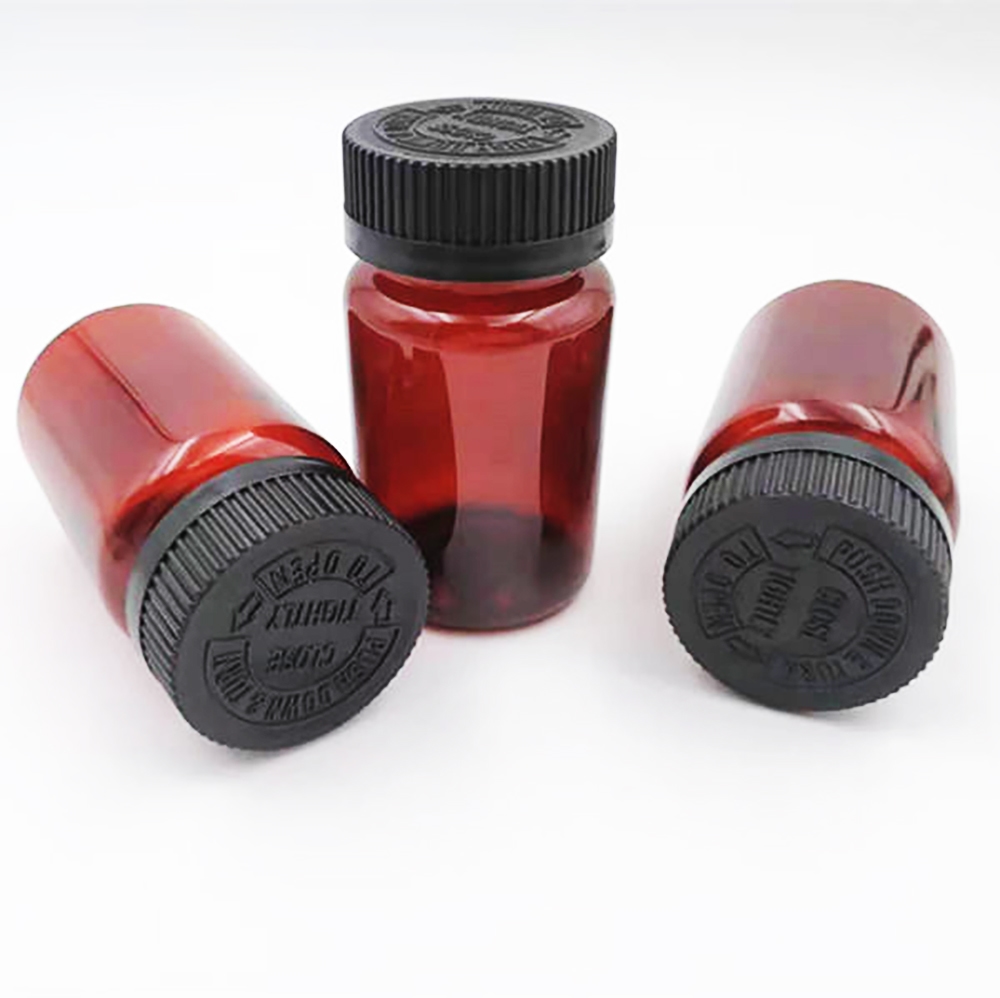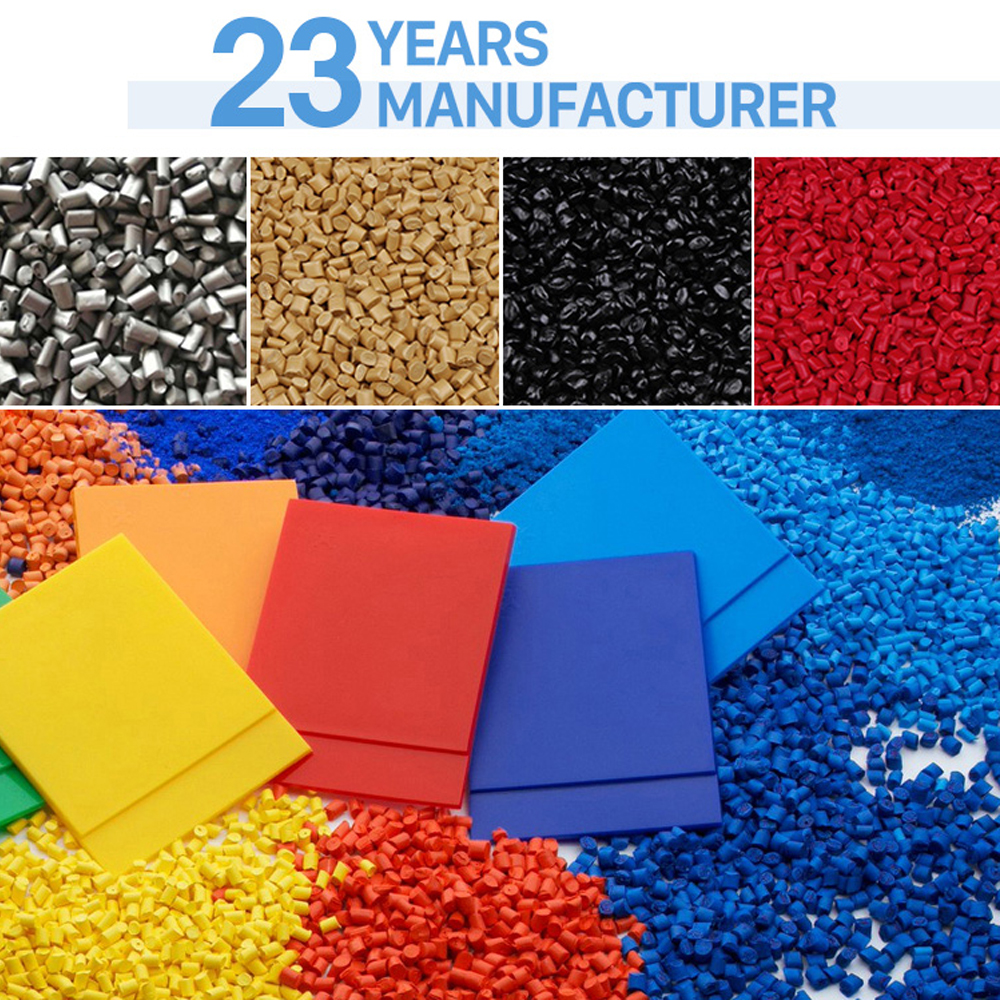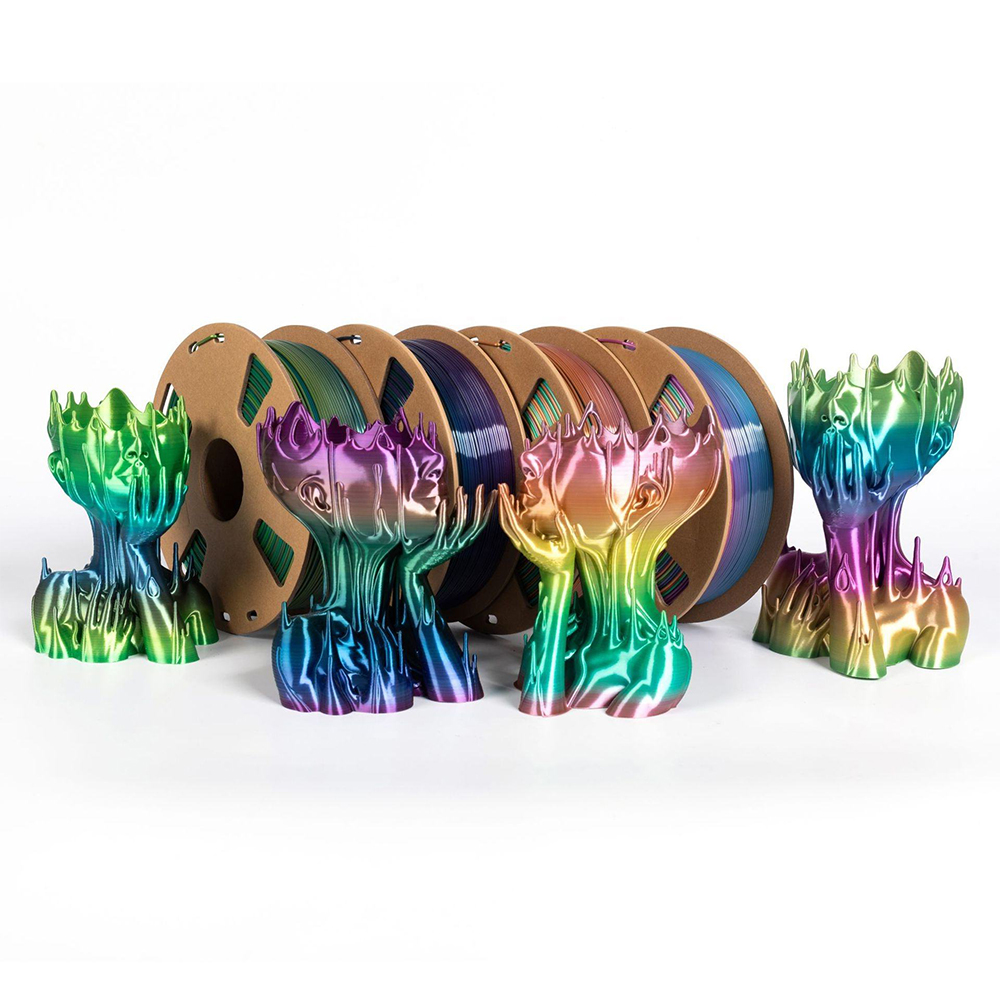
फार्मास्युटिकल पैकेजिंग में एम्बर मास्टरबैच के लिए आवश्यक गाइड
एम्बर मास्टरबैच फार्मास्यूटिकल पैकेजिंग के विकास और विनिर्माण में महत्वपूर्ण भूमिका निभाता है, विशेष रूप से पीईटी (पॉलीइथिलीन टेरेफ्थेलेट) सामग्री के लिए।
मूलतः, मास्टरबैच पिगमेंट और/या एडिटिव्स का एक गाढ़ा मिश्रण होता है जिसे गर्म करके एक कैरियर रेज़िन में डाला जाता है। इसके बाद, इसे ठंडा करके दानेदार रूप में परिवर्तित किया जाता है। मास्टरबैच प्लास्टिक निर्माण प्रक्रिया के दौरान कच्चे पॉलिमर को रंगने का एक कुशल और किफ़ायती तरीका प्रदान करते हैं।
मास्टरबैच का उपयोग करने के वैकल्पिक तरीके भी हैं, जैसे पूरी तरह से मिश्रित सामग्री खरीदना या कच्चे माल से मौके पर ही मिश्रण तैयार करना। हालाँकि, मास्टरबैच के कुछ फायदे भी हैं। हालाँकि शुद्ध पिगमेंट की तुलना में इन्हें ज़्यादा भंडारण स्थान की आवश्यकता होती है और इनका निर्माण समय भी ज़्यादा होता है, फिर भी ये एक लोकप्रिय विकल्प हैं। इसके अतिरिक्त, ये वाहक और योजकों को अधिक ऊष्मा के संपर्क में लाते हैं, जो कि थोड़े से तापीय रूप से स्थिर पिगमेंट के लिए आवश्यक हो सकता है।
मास्टरबैच का उपयोग योजक या रंगद्रव्य के जमाव और खराब फैलाव से संबंधित समस्याओं को कम करता है। मास्टरबैच में ये योजक अंतिम बहुलक की तुलना में अधिक सांद्रता में मौजूद होते हैं, जिससे यह सुनिश्चित होता है कि वे मेज़बान रेज़िन में समान रूप से वितरित हों। यह अनुप्रयोग कुछ हद तक स्टील में मिश्रधातु तत्वों को मिलाने के लिए फेरोअलॉय के उपयोग जैसा है।
मास्टरबैच अत्यधिक सांद्रित हो सकते हैं, जिनके लिए अक्सर उच्च "लेट-डाउन अनुपात" की आवश्यकता होती है। उदाहरण के लिए, एक टन प्राकृतिक पॉलिमर के लिए एक 25 किलोग्राम का बैग इस्तेमाल किया जा सकता है। यह उच्च सांद्रता महंगे घटकों की छोटी मात्रा की सटीक खुराक की अनुमति देती है। इसके अलावा, मास्टरबैच में कणों का ठोस रूप, महीन दाने वाले ठोस योजकों से जुड़ी धूल संबंधी चिंताओं को कम करता है। चूँकि ठोस मास्टरबैच विलायक-मुक्त होते हैं, इसलिए इनका शेल्फ जीवन लंबा होता है क्योंकि समय के साथ विलायक का वाष्पीकरण नहीं होता है। आमतौर पर, मास्टरबैच में 40-65 प्रतिशत योजक होता है, हालाँकि कुछ मामलों में, यह सीमा 15-80 प्रतिशत तक भी हो सकती है।
मास्टरबैच और बेस रेज़िन का सामान्य अनुपात लगभग 1 से 5% होता है। रंगीन और एडिटिव किस्मों सहित कई मास्टरबैच एक साथ इस्तेमाल किए जा सकते हैं। इसके अतिरिक्त, मास्टरबैच के भीतर वाहक एक प्लास्टिसाइज़र (तरल मास्टरबैच में आम) या प्रसंस्करण सहायक के रूप में काम कर सकता है।
आमतौर पर, मशीनों में बेस पॉलीमर और मास्टरबैच के पूर्व-मिश्रित कण डाले जाते हैं। अंतिम मिश्रण मशीन के स्क्रू और एक्सट्रूज़न सेक्शन में होता है। हालाँकि, यह ध्यान रखना ज़रूरी है कि मास्टरबैच और बेस सामग्री को अलग किया जा सकता है, जिसके नकारात्मक परिणाम हो सकते हैं। लिक्विड मास्टरबैच को सीधे मशीन के स्क्रू में भी डाला जा सकता है, या तो ठोस रूप में या लिक्विड मास्टरबैच के लिए पेरिस्टाल्टिक पंप के माध्यम से। लिक्विड मास्टरबैच के उपयोग से अत्यधिक सटीक खुराक और मशीन के बार-बार इस्तेमाल के बीच रंग में तेज़ बदलाव संभव होता है।
मास्टरबैच तैयार प्लास्टिक उत्पादों के लिए कई लाभ प्रदान करते हैं:
उत्पादकता में वृद्धि: मास्टरबैच उत्पादन क्षमता बढ़ाने में योगदान करते हैं, खासकर मात्रा के संदर्भ में। फिल्मों के बेहतर भौतिक गुणों के कारण, ये डाउनगेजिंग को भी संभव बनाते हैं।
लागत बचत: मास्टरबैच में CaCO3 घटकों की उच्च विशिष्ट ऊष्मा, मशीन को चलाने के लिए कम ऊर्जा की आवश्यकता होने से सामग्री लागत को कम करने में मदद करती है।
उन्नत भौतिक गुण: मास्टरबैच प्लास्टिक उत्पादों के विभिन्न भौतिक गुणों को बढ़ाने में महत्वपूर्ण भूमिका निभाते हैं, जिनमें शामिल हैं:
निष्कर्षतः, मास्टरबैच प्लास्टिक उद्योग में एक मूलभूत घटक के रूप में खड़ा है, जो प्लास्टिक सामग्री को रंगने और निखारने के लिए एक किफ़ायती और कुशल समाधान प्रदान करता है। इसके रंगद्रव्य और योजकों का सांद्रित रूप, जो एक वाहक रेज़िन में समाहित होता है, निर्माण प्रक्रिया को सुव्यवस्थित बनाता है और कई लाभ प्रदान करता है।
खुराक की सटीकता, फैलाव में आसानी, और एक साथ कई मास्टरबैच का उपयोग करने की क्षमता इस दृष्टिकोण की लोकप्रियता में योगदान देने वाले प्रमुख कारक हैं। मास्टरबैच का ठोस रूप धूल संबंधी चिंताओं को कम करता है, और उनके विलायक-मुक्त होने के कारण उनकी शेल्फ लाइफ बढ़ जाती है।
इसके अलावा, मास्टरबैच प्लास्टिक उत्पादों के उत्पादन में कई लाभ लाते हैं, जिनमें उत्पादकता में वृद्धि, लागत बचत, तथा भौतिक गुणों जैसे कठोरता, लचीलापन, आसंजन और मुद्रण क्षमता में वृद्धि शामिल है।
जैसे-जैसे प्लास्टिक उद्योग निरंतर विकसित हो रहा है और दक्षता एवं लागत-प्रभावशीलता को प्राथमिकता दे रहा है, मास्टरबैच उच्च-गुणवत्ता, जीवंत और कार्यात्मक प्लास्टिक उत्पादों की खोज में आधारशिला बने रहेंगे। उनकी बहुमुखी प्रतिभा और प्रभावशीलता उन्हें प्लास्टिक की दुनिया में एक मूल्यवान संपत्ति बनाती है, जो इस गतिशील उद्योग में नवाचार और प्रगति का प्रमाण है।
हमारे ब्लॉग से मास्टरबैच उद्योग में अधिक ज्ञान और रुझान जानें।

एम्बर मास्टरबैच फार्मास्यूटिकल पैकेजिंग के विकास और विनिर्माण में महत्वपूर्ण भूमिका निभाता है, विशेष रूप से पीईटी (पॉलीइथिलीन टेरेफ्थेलेट) सामग्री के लिए।

प्लास्टिक निर्माण के क्षेत्र में, उत्पाद की गुणवत्ता और दृश्य अपील के लिए सटीक और जीवंत रंग प्राप्त करना एक महत्वपूर्ण तत्व है।

3डी प्रिंटिंग हमारे युग में एक परिवर्तनकारी तकनीक के रूप में खड़ी है, जिसका अनुप्रयोग प्रारंभिक प्रोटोटाइप से लेकर बड़े पैमाने पर उत्पादन तक विभिन्न उद्योगों में होता है।
©2023. मास्टरबैच निर्माता सर्वाधिकार सुरक्षित।
हमारी टीम 20 मिनट में सबसे अच्छा प्रस्ताव भेजेगी।